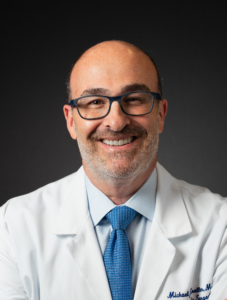Joint Replacement

When your hip, knee or shoulder joints have been injured, joint replacement specialists at AOSMI are skilled at utilizing the most advanced surgical technology available to replace joints using minimally invasive techniques. Our proficiency in knee, hip, and shoulder joint replacement surgery will allow you to heal quicker, with less pain and scarring.
Our physicians are members of the Total Joint Center of New Jersey at CentraState, an organization founded by AOSMI’s Dr. Nasar, and directed by AOSMI’s Dr. Eric Buxbaum, devoted to providing the highest quality of orthopedic care and a VIP-style experience for joint replacement patients. The orthopedic surgeons at AOSMI utilize the latest technology and cutting-edge techniques in anesthesia and pain management so that you rapidly recovery with the best possible outcome.
Common Conditions Treated with Joint Replacement Surgery
The most common condition that requires joint replacement surgery is arthritis, a disease that wears out and destroys the smooth cartilage that lines the joints of your body. Cartilage allows your bones to move smoothly and efficiently, so when it becomes damaged. Body parts typically affected by arthritis, resulting in the need for joint replacement surgery, commonly include:
Non-Surgical Treatments for Joint Pain
The Joint Replacement Orthopedic Specialists at AOSMI are committed to helping patients recover from joint pain quickly and efficiently by using all available options. Our doctors will exhaust conservative, non-surgical treatment options before considering surgery. Non-surgical treatments options offered at AOSMI include:
- Acupuncture This ancient practice involves the insertion of thin needles into specific points of the body to help alleviate pain and promote healing. Acupuncture can stimulate the body’s natural pain-relieving mechanisms to improve joint function.
- Massage Therapeutic massage therapy techniques can help relax muscles, reduce tension, and improve blood circulation around the joints. This can lead to pain relief, increased range of motion, and enhanced overall joint function.
- Physical Therapy Our expert Physical Therapists develop tailored exercise programs to strengthen the muscles surrounding the joint, improve flexibility, and enhance joint stability. Physical therapy can help alleviate pain, improve joint mobility, and optimize overall joint function.
- Injections Various types of injections, such as corticosteroids or hyaluronic acid, can provide temporary pain relief and reduce inflammation in the joint. These injections can help manage joint pain and improve joint function, allowing you to regain mobility and engage in daily activities more comfortably.
- Bracing Customized bracing or orthotic devices can provide support and stability to the affected joint, reducing pain and preventing further damage. Bracing can be particularly beneficial for joint conditions that require protection or offloading of weight.
Joint Replacement Surgeries Offered at AOSMI

At AOSMI, we provide minimally invasive joint replacement surgery. This procedure removes the worn cartilage and bone at the ends of diseased joints and replaces it with state-of-the-art prosthetic devices that function smoothly without causing pain. Our team of fellowship-trained joint replacement orthopedic specialists utilize their combined skills to provide results that can last a lifetime. Joint replacement surgeries offered at AOSMI include:
- Minimally Invasive Total Hip Replacement
- Direct Anterior Approach Total Hip Replacement
- Minimally Invasive Total Knee Replacement
- Minimally Invasive Partial Knee Replacement
- Shoulder Replacement
- Shoulder Resurfacing
- Reverse Total Shoulder Replacement
- Total Ankle Replacement
At AOSMI, our approach to total joint replacement focuses on restoring your previous activity level, minimizing pain and facilitating rapid recovery. With a devoted, professional, and highly skilled multidisciplinary team of advanced orthopedic specialists, we will meet your needs so that you rapidly progress and recover from surgery. Contact us today to learn more about the Joint Replacement Surgeons at AOSMI.
Frequently Asked Questions About Joint Replacement Surgery
How long does it take to recover from joint replacement surgery?
The recovery time after joint replacement surgery can vary depending on various factors, including the type of joint replaced, the patient’s overall health, and the individual healing process. Generally, patients can expect the following timeline:
– Hospital Stay: At AOSMI, most of our patients are able to leave the same day as their joint replacement surgery, which is referred to as an outpatient joint replacement surgery, based on their progress and the surgeon’s recommendations. Outpatient joint replacement surgery is ideal for physically fit and motivated patients and allows them to return to work and activities as quickly as possible.
– Initial Recovery Phase: The first few weeks after surgery are focused on pain management, wound healing, and regaining mobility with the help of physical therapy. Patients typically use assistive devices like crutches or walkers during this period.
– Subacute Phase: This phase, occurring from a few weeks to a few months after surgery, involves continued rehabilitation and physical therapy to improve strength, flexibility, and mobility.
– Full Recovery: It may take several months to a year to fully recover from joint replacement surgery. The timeline varies depending on individual factors, and it is essential to follow the surgeon’s post-operative instructions and engage in rehabilitation exercises.
It’s important to note that the recovery process is different for everyone, and individual experiences may vary.
Is joint replacement a major surgery?
Yes, joint replacement surgery is considered a major surgical procedure. It involves removing damaged or diseased joint components and replacing them with artificial implants. Joint replacement surgeries require careful pre-operative planning, anesthesia, and post-operative monitoring. While joint replacement surgeries have become more common and routine, they still carry risks and require appropriate medical care and rehabilitation.
What is the most common type of joint replacement?
The most common type of joint replacement is the Total Knee Replacement (TKR) is also highly prevalent and commonly performed. Other joint replacements, such as shoulder, elbow, and ankle, are less common but still significant procedures.
Another major surgical procedure that is becoming more common is the Direct Anterior Approach Total Hip Replacement Surgery. Patients can choose the traditional posterior approach or opt for the direct anterior approach if their surgeon feels that they are a good candidate. The direct anterior approach is a minimally invasive technique that allows surgeons to access the hip joint by making a small incision at the front of the hip, as opposed to the traditional posterior approach, so that they can remove damaged bone and cartilage, and implant the new artificial hip without damaging the surrounding muscles and tendons. The highlight of this procedure is that it does not require cutting and detaching muscles to access the hip joint. The direct anterior approach allows surgeons to work between the muscles without cutting them. This muscle-sparing technique results in less pain, faster recovery time, increased stability, and increased range of motion of the hip joint.
Does joint replacement get rid of arthritis?
Yes, joint replacement can cure arthritis from the affected joint. Joint replacement also alleviates the pain and disability caused by arthritis. The procedure involves removing the damaged joint surfaces and replacing them with artificial components. The new joint allows for improved function, reduced pain, and increased mobility. Joint replacement is typically recommended when non-surgical treatments have been unsuccessful in managing arthritis symptoms.
What are the signs of needing a hip replacement?
Signs that may indicate the need for a hip replacement include:
– Severe and persistent hip pain that affects daily activities, such as walking or climbing stairs.
– Chronic hip pain that persists despite conservative treatments such as medication, physical therapy, and lifestyle modifications.
– Significant joint stiffness and limited range of motion in the hip.
– Difficulty in getting up from a seated position or standing for prolonged periods due to hip pain and stiffness.
– Decreased quality of life and inability to participate in desired activities due to hip pain and limitations.
These signs suggest that the hip joint may be severely damaged or arthritic, and consultation with an orthopedic surgeon is recommended for a comprehensive evaluation and appropriate treatment recommendations.
Find your Provider



 Alan S. Nasar, MD, FAAOS
Alan S. Nasar, MD, FAAOS











